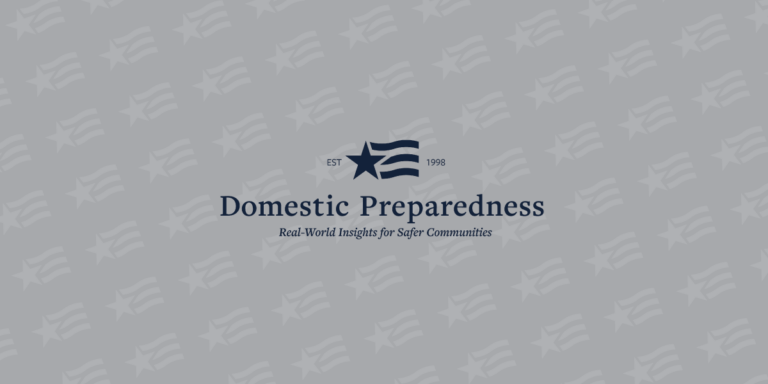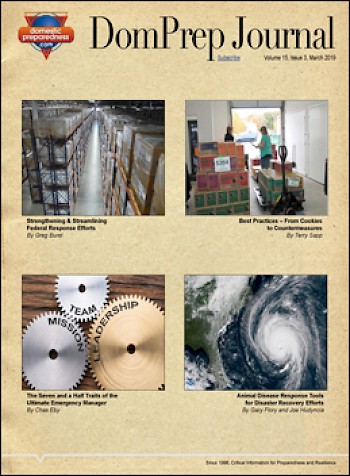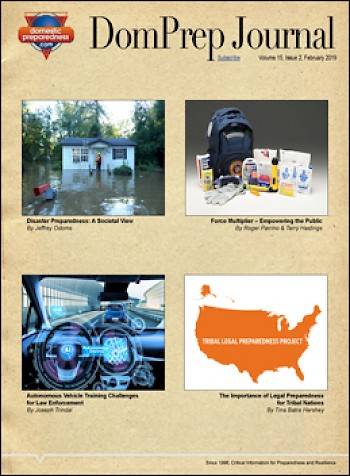
Author Archive

The economic consequences of large-scale disease outbreaks can be enormous. Upgrading countries’ preparedness is relatively inexpensive and affordable. The financing gap for preparedness is one of the starkest problems in health security, especially among low-income and lower-middle-income countries. The World Bank Group’s International Development Association 2019 replenishment presents a choice opportunity

Building and Measuring Community Resilience: Actions for Communities and the Gulf Research Program
Domestic Preparedness
April 1, 2019
“Building and Measuring Community Resilience: Actions for Communities and the Gulf Research Program” summarizes the existing portfolio of relevant or related resilience measurement efforts and notes gaps and challenges associated with them. It describes how some communities build and measure resilience and offers four key actions that communities could take to

Building and Measuring Community Resilience: Actions for Communities and the Gulf Research Program
Domestic Preparedness
April 1, 2019
“Building and Measuring Community Resilience: Actions for Communities and the Gulf Research Program” summarizes the existing portfolio of relevant or related resilience measurement efforts and notes gaps and challenges associated with them. It describes how some communities build and measure resilience and offers four key actions that communities could take to

March 2019
Domestic Preparedness
March 27, 2019
Featured in this issue: Vertical Collaboration for Widespread Health Threats, By Catherine L. Feinman; Strengthening & Streamlining Federal Response Efforts, By Greg Burel; Best Practices – From Cookies to Countermeasures, By Terry Sapp; The Seven and a Half Traits of the Ultimate Emergency Manager, By Chas Eby; Animal Disease Response

Critical Infrastructure Protection: Progress and Challenges in DHS’s Management of Its Chemical Facility Security Program
Domestic Preparedness
March 11, 2019
The Department of Homeland Security (DHS) has made progress addressing challenges that the U.S. Government Accountability Office previously identified to managing the Chemical Facility Anti-Terrorism Standards program. This report summarizes progress made and challenges remaining in key aspects of the program. https://www.gao.gov/assets/700/697117.pdf

Critical Infrastructure Protection: Progress and Challenges in DHS’s Management of Its Chemical Facility Security Program
Domestic Preparedness
March 11, 2019
The Department of Homeland Security (DHS) has made progress addressing challenges that the U.S. Government Accountability Office previously identified to managing the Chemical Facility Anti-Terrorism Standards program. This report summarizes progress made and challenges remaining in key aspects of the program. https://www.gao.gov/assets/700/697117.pdf

February 2019
Domestic Preparedness
February 27, 2019
Featured in this issue: Community Resilience – Combining Nature & Nurture, By Catherine L. Feinman; Disaster Preparedness: A Societal View, By Jeffrey Odoms; Force Multiplier – Empowering the Public, By Roger Parrino & Terry Hastings; Autonomous Vehicle Training Challenges for Law Enforcement, By Joseph Trindal; The Importance of Legal Preparedness

Modernizing the Nation’s Public Alert and Warning System
Domestic Preparedness
February 26, 2019
In October 2018, the FEMA National Advisory Council Integrated Public Alert and Warning System Subcommittee provided the National Advisory Council (NAC) with a report for an integrated public alert and warning system. The NAC considered and voted on 17 recommendations in a session held during its public meeting on 7

Modernizing the Nation’s Public Alert and Warning System
Domestic Preparedness
February 26, 2019
In October 2018, the FEMA National Advisory Council Integrated Public Alert and Warning System Subcommittee provided the National Advisory Council (NAC) with a report for an integrated public alert and warning system. The NAC considered and voted on 17 recommendations in a session held during its public meeting on 7

Ready or Not: Protecting the Public’s Health From Diseases, Disasters and Bioterrorism 2019
Domestic Preparedness
February 18, 2019
The Ready or Not: Protecting the Public’s Health From Diseases, Disasters and Bioterrorism series has tracked public health emergency preparedness in the United States since 2003. The series documents progress in the nation’s level of preparedness as well as those areas still in need of improvement. https://www.tfah.org/wp-content/uploads/2019/02/Ready-or-Not-Report-2019.pdf
Follow Us
Get Instant Access
Subscribe today to Domestic Preparedness and get real-world insights for safer communities.
ARchives
Article Out Loud – Looking Back to Look Ahead to Protect the Food Supply
October 12, 2022
History reveals patterns that preparedness professionals can use to better protect communities from agroterrorism and supply chain threats. One historical study has been updated to reflect cases of intentional food contamination events around the world. Learn more about this research and how to protect the food supply.
Article Out Loud – Taking Flight – Creating a Robust Aviation Response, Part 2
October 12, 2022
Volunteer general aviation pilots have assisted their communities during emergencies and disasters for many years. This is the second of a two-part article on their disaster preparedness efforts in the Pacific Northwest. In this part, they participate in two separate yet coordinated functional earthquake and tsunami disaster exercises.
Article Out Loud – Hospital Decontamination – High Costs & Limited Benefits
October 11, 2022
Monkeypox is the latest virus that raises contamination and decontamination questions. This 2013 article explains how each decision made will affect a hospital’s total cost and benefits.
Article Out Loud – Chemical Sector Perspectives
October 5, 2022
The Chemical Sector is one of 16 sectors identified as critical infrastructure under the Cybersecurity & Infrastructure Security Agency. Domestic Preparedness invited one subject matter expert to answer important questions about this sector and how the sector and its interdependencies can affect any community.
Article Out Loud – Lessons From Leading Virtual Operations
October 5, 2022
Over the past two and a half years, most emergency preparedness professionals experienced some level of virtual work, even at emergency operations centers (EOC). And it appears that some aspects of working virtually is here to stay – including during a response.
Article Out Loud – Everyone Must Go: The Anatomy of an Evacuation
October 4, 2022
This 2009 article discusses the lessons learned after Hurricane Katrina. Following the evacuation of many Floridians prior to Hurricane Ian, many new lessons will likely be learned.
Article Out Loud – A New Standard of Care for Crisis Incidents
October 4, 2022
Hospitals in Florida continued to care for their patients as Hurricane Ian battered their state. This 2012 article describes the type of interagency cooperation and standard of care needed during this crisis.
Article Out Loud – Military Combat Skills for Civilian Disaster Response
September 28, 2022
During their service, military personnel acquire a broad range of lifesaving skills that are critical when on the frontline during wartime. Effective medical triage is one of the skills needed during combat and any major disaster or catastrophic event.
Article Out Loud – Taking Flight – Creating a Robust Aviation Response, Part 1
September 28, 2022
General aviation pilots have been finding ways to assist their communities during emergencies and disasters for many years. However, over the past two years, significant advances in disaster preparedness have been made as emergency response plans were created and exercised to integrate volunteer aviation response into other community response efforts.
Article Out Loud – Building Resource Capacity – Start Now
September 21, 2022
Building resource capacity involves research, planning, and execution that should begin now. Identifying potential dangers, considering “what if” scenarios, capitalizing on other events and incidents, and overcoming barriers are key components for building resilient communities. This article explains how to get started.
Follow Us
Get Instant Access
Subscribe today to Domestic Preparedness and get real-world insights for safer communities.


